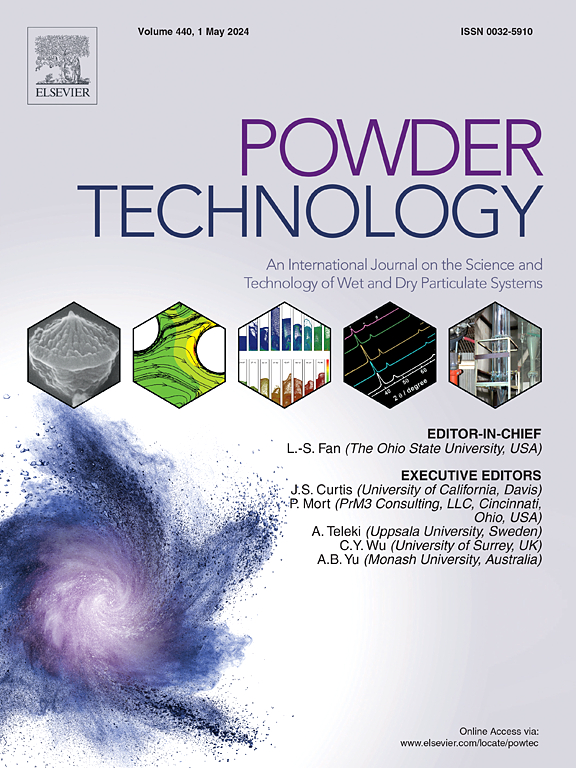Suppression characteristics of modified fly ash-based explosion suppressants for high-density polyethylene dust: From the perspective of explosion pressure, flame behavior, thermal stability, and solid residues
IF 4.5
2区 工程技术
Q2 ENGINEERING, CHEMICAL
引用次数: 0
Abstract
Dust explosions present a considerable risk in industrial settings, especially during the handling of high-density polyethylene (HDPE) and similar polymers. In this investigation, fly ash (FA) was utilized as the base matrix to develop inhibitors named MFA-1, MFA-2, and MFA-2@APP via calcination, acid-base activation, surface modifications, and solvent-antisolvent methods. The ability of these materials to suppress HDPE dust explosions was tested in a 20 L spherical apparatus, establishing the critical addition amounts of each suppressant. Experimentally, FA, MFA-1, MFA-2, and MFA-2@APP variably lowered the maximum explosion pressure (Pmax), the maximum rate of pressure rise ((dP/dt)max), and the flame propagation speed, with critical addition amounts of 720 %, 640 %, 620 %, and 180 %, respectively. In addition to the considerable enhancement in apparent activation energy, the nanostructured clusters and the resultant carbonized and oxidized layers in the explosion residues significantly inhibited oxidation and curtailed the release of flammable gases. The modified FA demonstrated its suppressive capacity through several mechanisms: dilution, endothermic absorption, and radical scavenging, with MFA-2@APP exhibiting the most pronounced synergistic effects. This research underscores the significance of safely managing HDPE dust and the potential of FA for developing cost-effective, eco-friendly suppressants.

改性粉煤灰基抑爆剂对高密度聚乙烯粉尘的抑爆特性:从爆炸压力、火焰行为、热稳定性和固体残留的角度
粉尘爆炸在工业环境中存在相当大的风险,特别是在处理高密度聚乙烯(HDPE)和类似聚合物的过程中。在这项研究中,粉煤灰(FA)作为基底基质,通过煅烧、酸碱活化、表面改性和溶剂-抗溶剂方法制备了MFA-1、MFA-2和MFA-2@APP抑制剂。在20 L球形装置中测试了这些材料抑制HDPE粉尘爆炸的能力,确定了每种抑制剂的临界添加量。实验结果表明,FA、MFA-1、MFA-2和MFA-2@APP在临界添加量分别为720%、640%、620%和180%时,最大爆炸压力(Pmax)、最大压力上升速率(dP/dt)max和火焰传播速度均有不同程度的降低。除了显著提高表观活化能外,爆炸残留物中的纳米结构团簇和由此产生的碳化和氧化层显著抑制了氧化并减少了可燃气体的释放。改性FA通过稀释、吸热吸收和自由基清除等机制显示出其抑制能力,其中MFA-2@APP表现出最明显的协同作用。这项研究强调了安全管理HDPE粉尘的重要性,以及FA在开发成本效益高、环保的抑制剂方面的潜力。
本文章由计算机程序翻译,如有差异,请以英文原文为准。
求助全文
约1分钟内获得全文
求助全文
来源期刊

Powder Technology
工程技术-工程:化工
CiteScore
9.90
自引率
15.40%
发文量
1047
审稿时长
46 days
期刊介绍:
Powder Technology is an International Journal on the Science and Technology of Wet and Dry Particulate Systems. Powder Technology publishes papers on all aspects of the formation of particles and their characterisation and on the study of systems containing particulate solids. No limitation is imposed on the size of the particles, which may range from nanometre scale, as in pigments or aerosols, to that of mined or quarried materials. The following list of topics is not intended to be comprehensive, but rather to indicate typical subjects which fall within the scope of the journal's interests:
Formation and synthesis of particles by precipitation and other methods.
Modification of particles by agglomeration, coating, comminution and attrition.
Characterisation of the size, shape, surface area, pore structure and strength of particles and agglomerates (including the origins and effects of inter particle forces).
Packing, failure, flow and permeability of assemblies of particles.
Particle-particle interactions and suspension rheology.
Handling and processing operations such as slurry flow, fluidization, pneumatic conveying.
Interactions between particles and their environment, including delivery of particulate products to the body.
Applications of particle technology in production of pharmaceuticals, chemicals, foods, pigments, structural, and functional materials and in environmental and energy related matters.
For materials-oriented contributions we are looking for articles revealing the effect of particle/powder characteristics (size, morphology and composition, in that order) on material performance or functionality and, ideally, comparison to any industrial standard.
 求助内容:
求助内容: 应助结果提醒方式:
应助结果提醒方式:


